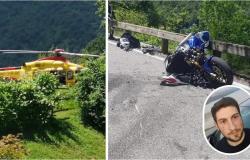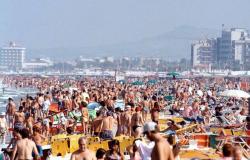AGI – On Christmas Eve 2022, a massive aurora lit up the sky for thousands of kilometers around the North Pole. The light show allowed scientists to observe a unique event: the polar rain aurora, a rare sparkling phenomenon that forms when energetic electrons from the Sun cascade over the Earth’s polar regions. The discovery is reported in Science Advances. Auroras form when charged particles from the Sun hit and interact with the Earth’s magnetic field.
Their energy usually turns into bright displays of dancing green curtains, towering red columns, or other spectacles like those that dazzled skywatchers around the world in May. Polar shower auroras form when electrons traveling directly from the Sun’s corona, or outer atmosphere, crash into Earth’s atmosphere. These auroras are rare because these electrons rarely hit the atmosphere in large enough numbers to generate a glow. In addition, other types of charged particles often interfere with these electrons, preventing polar shower auroras from forming. But for 28 hours in December 2022, the surge of other solar particles, known as the solar wind, slowed to a trickle.
Electrons from the polar rain rained down unimpeded on Earth, creating a greenish glow that stretched more than 3,000 kilometers across the North Pole. “Anyone looking up that night in the high Arctic could have spotted it,” said Keisuke Hosokawa, a space physicist at Tokyo University of Electrocommunication who led the research team. “Unlike the curtains and pillars of light of standard auroras, this auroral glow was widespread across the sky.” Scientists have occasionally spotted auroras in observations from satellites that look down on the poles.
Since 2011, Hosokawa has pointed a robotic camera skyward over the Norwegian islands of Svalbard in the Arctic Ocean, hoping to glimpse a polar rain aurora from the ground for the first time. He only succeeded in January 2023, when he examined data from about three weeks earlier. The aurora from that period was found to be very different from other types of aurora. Hosokawa then checked images of the polar regions taken by US military weather satellites around the same time as the Svalbard observations. In these images, he observed the auroral glow filling almost the entire northern polar ice cap.
Satellites have spotted small polar auroras in recent decades, but the most recent observation of a large aurora was in May 1999, when the solar wind also temporarily decreased. “Studying polar shower auroras could help scientists understand how the solar wind interacts with Earth’s magnetic field,” added Yongliang Zhang, a space physicist at the Johns Hopkins University Applied Physics Laboratory in Laurel, Maryland, and co-author of the study .





